Festivals
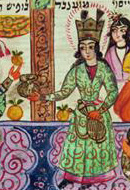 Purim Puzzles
Purim PuzzlesFriday, March 11, 2011 by Lawrence Grossman | Jewish Ideas Daily » Daily Features
Purim, Judaism's strangest holiday (which this year falls on March 20), is prescribed by what may be the strangest book in the Hebrew Bible, the scroll (m'gilah) of Esther. Two public readings of the book, one at night and the other in the morning, tell a story of Persian palace intrigue in the fifth century B.C.E., a recitation accompanied by the holiday's decidedly unspiritual noisemaking, tippling, and masquerade.
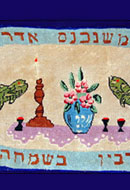 Of Calendars and Controversy
Of Calendars and ControversyThursday, February 10, 2011 by Michael Carasik | Jewish Ideas Daily » Daily Features
It's the month of Adar, and in Jewish tradition, the beginning of Adar always means an "increase in joy." After all, the festive holiday of Purim, on Adar 15, is just two weeks away—or would be in a normal year.
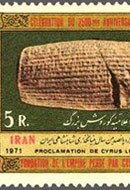 Cyrus, Ahmadinejad, and the Politics of Purim
Cyrus, Ahmadinejad, and the Politics of PurimTuesday, February 1, 2011 by Alex Joffe | Jewish Ideas Daily » Daily Features
Anyone who deplores the politicization of the past should have been apoplectic in September 2010 at the sight of Mahmoud Ahmadinejad receiving the loan of the "Cyrus Cylinder" from officials of the British Museum.
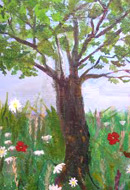 From New Year to Arbor Day
From New Year to Arbor DayWednesday, January 19, 2011 by Moshe Sokolow | Jewish Ideas Daily » Daily Features
The holiday of Tu Bishvat ("the fifteenth of Shvat") falls this year on Thursday, January 20. What are its origins, and when and why did it become incorporated into the calendar as the Jewish "Arbor Day"?
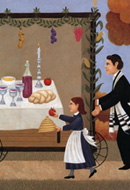 Be Joyful
Be JoyfulTuesday, September 21, 2010 by Yehudah Mirsky | Jewish Ideas Daily » Daily Features
Alongside the more colorful and distinctive rituals of the Sukkot festival—the taking-up of lulav and etrog, the sukkah itself—there is another command, less concrete and more penetrating: "And you will rejoice." Indeed, the passage in Deuteronomy (16: 14-15) concludes, v'hayita akh sameah, translatable as "you will be altogether joyful," or even "you will be only joyful."
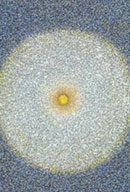 Creations
CreationsTuesday, September 7, 2010 by Yehudah Mirsky | Jewish Ideas Daily » Daily Features
Rosh Hashanah, the beginning of the year, marks the creation of the world. Or does it? The Torah refers to Rosh Hashanah, although not by that name, as the first day of "the seventh month" (Leviticus 23:24)—the seventh, that is, if you're counting from Nisan, the month of Passover. That month is designated as the beginning of the year in the first act of the Exodus: "This month will mark for you the first of the months; it will be, for you, the first month of the year" (Exodus 12:2). Like revolutionaries everywhere, the Israelites wanted a new calendar.
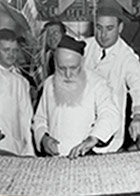 Thoroughly Modern Matzah
Thoroughly Modern MatzahThursday, March 25, 2010 | Jewish Ideas Daily » Daily Features
When Jews the world over sit down next week to mark the birth of Jewish history, matzah will figure prominently at the table. Matzah baking is an exacting task; according to traditional law, the entire process, from first kneading to exit from the oven, must be accomplished in 18 minutes flat, with not a speck of leaven in sight. For thousands of years, these specifications and others were laboriously met by hand. Yet this most ancient food has a modern history, too. The first matzah machine was invented in 1838 in France. With rabbinic approval, the technology moved steadily eastward. The...
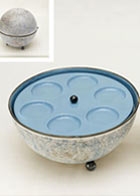 Judaica by Design
Judaica by DesignWednesday, February 17, 2010 | Jewish Ideas Daily » Daily Features
"Art for art's sake"—the idea that works of art must be judged solely on their own terms, apart from any considerations of moral, religious, or civic value—has by now become largely devoid of meaning, especially as so many artists openly hitch their work to one or another of today's political wagons. But with the lapsing of the polarities to which the phrase once gave rise, in particular those between art and religion, it has also become possible for newer generations of artists to turn their talents unapologetically to religious motifs. The results, as several recent exhibits suggest, are both intriguing and markedly uneven. Reinventing Ritual, a show from last fall at the...
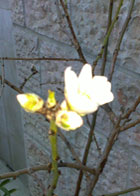 Tu b’Shevat: What Sorts of Trees are We?
Tu b’Shevat: What Sorts of Trees are We?Friday, January 29, 2010 | Jewish Ideas Daily » Daily Features
Deuteronomy 20, discussing the laws of war, and in particular siege, forbids the cutting down of fruit trees, adding, in an ambiguous and tantalizing phrase, "ki ha-adam etz ha-sadeh." The words can be translated as a simple if enigmatic statement ("for man is a tree of the field") or as a question (in the rendering of the JPS Torah,"are trees of the field human?"). The classical commentators were likewise divided. The Talmud, reading the phrase as a statement, is moved to offer a prototype of a human "tree of the field": a virtuous sage, a worthy teacher and role model. Rashi, the...
 Festival of Lights
Festival of LightsMonday, December 7, 2009 | Jewish Ideas Daily » Daily Features
Hanukkah, the eight-day holiday whose Hebrew dates are 25 Kislev - 2 Tevet, begins this year on the evening of December 11. It commemorates an ancient victory at once military, political, social, and religious. Militarily, the victory, which took place in Judea in 165 B.C.E., saw the routing of the forces of the Greek Seleucid king Antiochus Epiphanes by a rebel Jewish army under the leadership of Judah Maccabee. Politically, it ushered in a prolonged period of independent Jewish rule under the Hasmonean dynasty. Socially, it betokened the triumph of traditionalist Jews over the assimilating Hellenizers in their midst. Religiously,...
Editors' Picks
Seven Thousand Ways to Say "Happy New Year" Lydia Aisenberg, Givat Haviva. Telling the story of Zionism through Rosh Hashanah greeting cards. (With images.)
Loaves and Wishes Vered Guttman, Washington Post. On Rosh Hashanah, cuisine becomes a system of meaning. (With recipes)
It's a Bird! It's a Challah! Leah Koenig, Forward. Rolls shaped like birds, symbols of divine protection and mercy, are among traditional Ashkenazi foods for Rosh Hashanah and the meal before Yom Kippur.
Who is the Wicked Child? Jeffrey Goldberg, Atlantic. Responding to an essay by a Village Voice editor on the loss of her Zionist "innocence."
Digging the First Shuls Eric M. Meyers, Jewish Week. Excavations in Israel over the past decades suggest that the synagogue may be a considerably older institution than once thought.
There's a Key in My Challah Jeffrey Saks, Torah Musings. On the origin of the post-Passover tradition known as "shliss challah."
Passover without Jews Diane Cole, Wall Street Journal. Not only are more and more non-Jews seated at seder tables, but an increasing number of churches have been offering their own versions of the ritual—with their own messages.
The History of Horseradish Arthur Schaffer, Gesher. Tracing the ritual use of horseradish at the seder, a botanist finds that it parallels the travels and migrations of the Jewish people. (PDF, 1981)
Why is This Sabbath Different from All Other Sabbaths? Balashon. Some theories on why the Sabbath before Passover is referred to as "The Great Sabbath."
The Grape for Millions Yoni Appelbaum, Atlantic. Cheap, abundant, and local, the Concord grape proved useful to Jewish immigrants in America seeking an alternative to raisin wine.

